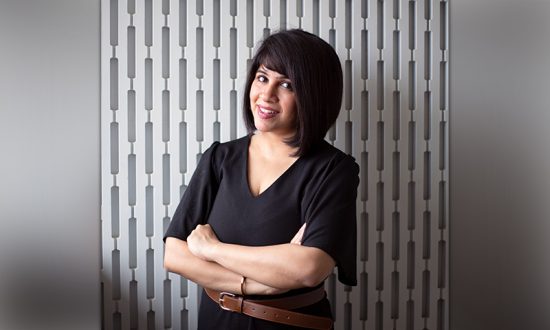Meena Murthy Kakkar is the Design Head at Envisage, an Interior and Architecture firm specializing in Design and Build projects. Meena pursued a Bachelor of Architecture from the School of Planning and Architecture, Delhi, after which she started her design quest as a Partner at Envisage, along with Vishal Kakkar.
School is the foremost step of education that children are exposed to. It is one of the longest tenures of education in one’s life, ranging from ten to twelve years, in most cases. Today’s teaching is a shift of thought, from bookish knowledge to more interactive learning. This transformation in pedagogy has brought forth a sea of change. Technology has become an integral part of sustaining society, and its infusion with education is therefore inevitable. With the advent of Covid – 19, most schools moved to online learning and made drastic changes in the education system. Online schooling has been in existence long before the Covid outbreak. The lockdowns simply made it extremely popular and a go-to option. It, however, has its advantages and disadvantages. Offline learning gives more scope for student-teacher interaction, social connectivity, healthy competition, and disadvantages like one-time lecture delivery, limited time, and choice of courses. Thus an amalgamation of technology with education has opened various knowledge resources and has thus aided learning.
After almost two years of studying from home, schools have started functioning in a hybrid model, just like workspaces. Offline schooling is a traditional way of learning, and it steadily is making a return. The design of learning spaces impacts and shapes the learning activities taking place and encourages new educational activities. Hybrid learning suggests blurred boundaries between teacher and students; it is open to collaborative learning where it is important for the collective efforts of students for learning to be beneficial. Digital spaces can support collaborative learning among students and foster a sense of community and shared knowledge. Children are not constrained to attend school physically, however they have the option to do so. With some students attending from home and some from classrooms, the layout needs to accommodate this composite format. All aspects should be catered to while designing these spaces; from furniture to visual connectivity. However, the overriding aspect is technology; one needs to recognise that it is not always required in abundance, nor does it have to be complicated. Technology had started to crawl into classrooms gradually before covid; however its acceptance and impact sped up with the sudden change in the mode of education. Designers should now keep in mind that the hybrid model of education might last a while and that classrooms must cater to this form. A significant criterion to keep in mind is the camera length and angle. The screens for online students should be placed such that the camera reaches the teaching boards to its best capacity and the visuals are crisp and clear to the students attending school virtually. One must also invest in suitable hardware and software to enable smooth hybrid learning whilst balancing the new educational synthesis.
Technology is limited to computers and the health of the building. In revolutionary times like these, where health and sanitization have priority in any sector, facilities must also aid good teaching, learning and working environments. To maintain the health of the building, one must first and foremost focus on the light and ventilation. Good illumination and air in the classrooms will better affect the students’ health. A technology that can be added to the outer walls is automated facades. Coordination between the changing light and fins can lead to balanced light and ventilation in schools. In addition, these facades can control natural elements leading to healthy study environments.
Whilst online education had been mandatory during the pandemic and lockdown, it is also necessary that one understands the importance of physical schooling and its impact on child development. Education is not restricted to just classrooms and must be taken outside the four walls. Teaching is now more than a lecturer in front of a blackboard and technology has been an integral part of its development. The New Education Policy has opened doors to various interactive and experiential learning methods. The flexibility in education is here to last. Education is more hands-on and reciprocal, opening gateways to opportunities beyond bookish knowledge. Hence designs and school curriculums should now offer what screens cannot. While schooling in the past few months has only stimulated the visual senses of children, it is not necessary that the return to schools must acknowledge the other senses too. They need to facilitate what screens cannot. Virtual connectivity has become so accessible that it has become a boon for the more coy set of population. Social interactiveness is vital in the development of humans. Hence, it is necessary to design schools that attract children back to the physical form of learning and bring them out for one’s enclosure. It has transformed education and the way that people learn and retain information. Therefore, its role in the future of education is a fundamental part of maintaining today’s economy’s growth and progression.
Getting to know about the latest technology is helpful but also the traditional processes are vital. For many people that is still an integral method of learning. In the case of offline education, everyone should be aware of both types of learning modes because that shall enhance the process of learning. When done with excellence, online and offline classes can bring results that harness knowledge and educate the masses. It is a good idea to use both methods called blended courses so that students get to see both sides and learn in a better environment.


